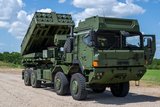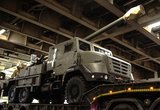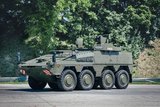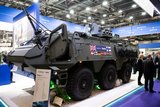FAMAE sets sights on 122mm MLRS
Graphic depicting the 122mm MLRS mounted on a Leopard 1V. (Image: FAMAE)
Chilean state-run defence company Fábricas y Maestranzas del Ejército (FAMAE) is developing a 122mm MLRS with a range of up to 40km in a project called Divison General René Echeverría.
A FAMAE representative explained to Shephard that the objective is to have a full prototype ready in 2022, with ‘system tests and technical firing tests’ expected to take place in Northern Chile by the end of the year.
The 20-tube rocket system will be placed aboard a Leopard 1V MBT after the main turret is removed. After tests are completed, the MLRS will be available for use by the Chilean
Already have an account? Log in
Want to keep reading this article?
More from Land Warfare
-
![Lithuanian 1st Division to achieve initial operating capability in 2026]()
Lithuanian 1st Division to achieve initial operating capability in 2026
Lithuania is one of the countries stepping up its defences in the face of the war in Ukraine with a particular focus on its neighbour and Russian ally Belarus, which has been making incursions into Lithuania’s airspace with balloons and drones.
-
![Beyond Survivability: How Active Protection Systems Are Empowering Commanders (Podcast)]()
Beyond Survivability: How Active Protection Systems Are Empowering Commanders (Podcast)
As threats diversify and intensify, APS are proving essential not just for vehicle protection but also for enhancing operational freedom, effectiveness and mission success in contested environments.
-
Medium knocked out of British Army LMP, with CAVS as heavyweight champion
As the British Army seeks to modernise and consolidate its diverse vehicle fleet, yet another change in direction is underway.






















